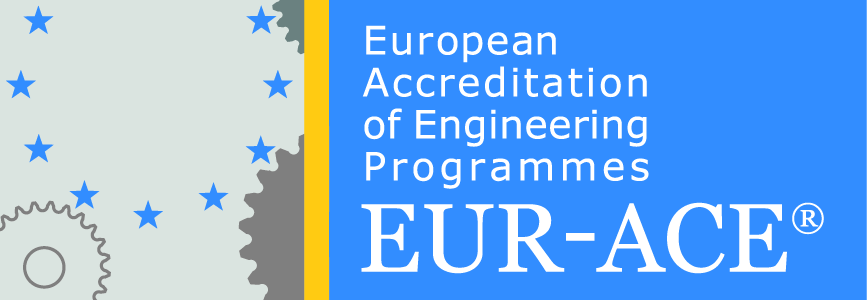| 1. | Course Title | IoT Standards and Protocols | |||||||||||||||
| 2. | Code | 4ФЕИТ07016А | |||||||||||||||
| 3. | Study program | Dedicated Embedded Computer Systems and Internet of Things | |||||||||||||||
| 4. | Organizer of the study program (unit, institute, department) | Faculty of Electrical Engineering and Information Technologies
Ss. Cyril and Methodius University in Skopje |
|||||||||||||||
| 5. | Degree (first, second, third cycle) | Second cycle | |||||||||||||||
| 6. | Academic year/semester | Year | I | Semester | 1 | ||||||||||||
| 7. | Workload measured by number of ECTS credits | 6 | |||||||||||||||
| 8. | Lecturer (In case of several lecturers to note the responsible one) | Dr. Danijela Efnusheva | |||||||||||||||
| 9. | Language of teaching | Macedonian and English | |||||||||||||||
| 10. | Course Prerequisites | None | |||||||||||||||
| 11. | Course Goals (acquired competencies) and study results:
Students will learn the basic standards and protocols for IoT systems. After the competition of the course, they will be able to design and develop software for different types of IoT applications in terms of data exchange in various IoT scenarios. |
||||||||||||||||
| 12. | Course Syllabus (with Chapters) and study results for each chapter:
|
||||||||||||||||
| 13. | Interconnection of Courses: This course develops the details regading the network layers and protocols used in the IoT systems. Thus, it is thightly connected to the basic course regarding IoT – Internet of things, as well as the network basic courses like: Dedicated and contemporary computer networks and Wireless Technologies and Networks for Internet of Things. | ||||||||||||||||
| 14. | Detailed description of teaching and work methods:
Lectures, independent learning, independent work on project tasks and preparation of seminar papers. |
||||||||||||||||
| 15. | Total number of course hours | 180 | |||||||||||||||
| 16.
|
Forms of teaching
|
16.1 | Lectures-theoretical teaching | 45 hours
|
|||||||||||||
| 16.2 | Exercises (laboratory, practice classes), seminars, teamwork | 45 hours
|
|||||||||||||||
| 16.3 | Practical work (hours): | 20 hours | |||||||||||||||
| 17.
|
Other course activities
|
17.1 | Projects, seminar papers | 45 hours | |||||||||||||
| 17.2 | Individual tasks | 0 hours | |||||||||||||||
| 17.3 | Homework and self-learning | 25 hours | |||||||||||||||
| 18. | Conditions for acquiring teacher’s signature and for taking final exam: 60% of all required course activities | ||||||||||||||||
| 19. | Grading | ||||||||||||||||
| 19.1 | Quizzes | 30 points | |||||||||||||||
| 19.2 | Seminar work/project (presentation: written and oral) | 50 points | |||||||||||||||
| 19.3 | Final Exam | 20 points | |||||||||||||||
| 20. | Grading criteria (points) | up to 50 points | 5 (five) (F) | ||||||||||||||
| from 51 to 60 points | 6 (six) (E) | ||||||||||||||||
| from 61 to 70 points | 7 (seven) (D) | ||||||||||||||||
| from 71 to 80 points | 8 (eight) (C) | ||||||||||||||||
| from 81 to 90 points | 9 (nine) (B) | ||||||||||||||||
| from 91 to 100 points | 10 (ten) (A) | ||||||||||||||||
| 21. | Method of monitoring of teaching quality | Self-evaluation and student surveys | |||||||||||||||
| 22. | Literature | ||||||||||||||||
| 22.1. | Required Literature | ||||||||||||||||
| No. | Author | Title | Publisher | Year | |||||||||||||
| 1. | Olivier Hersent, David Boswarthick, Omar Elloumi | The Internet of Things: Key Applications and Protocols | Wiley | 2012 | |||||||||||||
| 2. | Simone Cirani, Gianluigi Ferrari, Marco Picone, Luca Veltri | Internet of Things: Architectures, Protocols and Standards | Wiley | 2018 | |||||||||||||
| 3. | David Hanes, Gonzalo Salgueiro, Rob Barton | IoT Fundamentals: Networking Technologies, Protocols, and Use Cases for the Internet of Things | Cisco Press | 2017 | |||||||||||||
| 22.2. | Additional Literature | ||||||||||||||||
| No. | Author | Title | Publisher | Year | |||||||||||||
| 1. | Hwaiyu Geng | Internet of Things and Data Analytics Handbook | Wiley | 2016 | |||||||||||||



